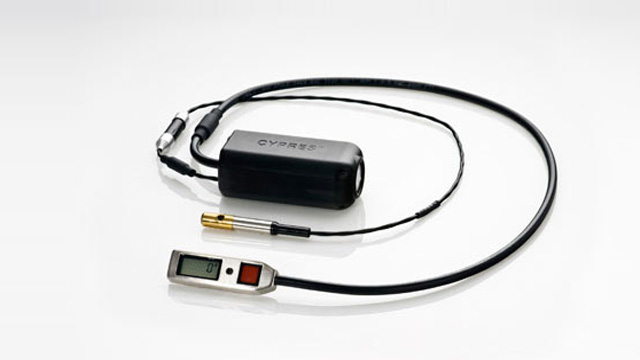The world of skydiving offers those who choose to take the leap of faith a rush like non-other. The sport has grown far beyond anything its pioneers could have ever imagined. This growth has raised the demand for the establishment of advanced safety protocols in drop zones around the world. Container systems, main and reserve parachutes and basic safety procedures have all made this sport safer for all its users. One particular invention however, stands out above the rest and it is the automatic activation device or AAD for short. An AAD is a small, technically advanced device which activates a cutter that severs the reserve closing loop when the user is falling at or greater than a predetermined speed (roughly 78 MPH) and at or lower than a predetermined altitude (roughly 750 feet AGL). The device is equipped with a small computer designed to compute the skydiver’s speed of travel by using the surrounding air pressure. AADs have been common to skydivers for decades but recent years have brought about amazing change to this industry. CYPRES and Vigil AADs have become two of the leading manufacturers of AADs in recent years. When turned on, the AADs computer chip uses an advanced pressure monitoring system to determine a skydiver’s altitude and fall rate. If a skydiver passes the predetermined altitude at a faster than predetermined fall rate, the system sends a signal to a small cutter built into the parachute’s container. Once activated the cutter severs the reserve line retaining pin, causing the reserve chute to immediately deploy. Essentially, both CYPRES and Vigil AADs are meant to perform in very similar ways. Historically, each company has built and fine-tuned their respective devices to fit various disciplines in the sport. Cypres 2 AADCYPRES which is short for Cybernetic Parachute Release System was developed by AirTec, a German company founded in 1990. Company founder Helmut Cloth decided to replace the old and faulty technology for opening devices of the time with a more reliable device. The result was revolutionary: the first CYPRES was ready in 1991 and became the first electronic opening device in the skydiving world. Shortly after hitting the market the CYPRES AAD sales grew to nearly 5,000 units per year. Developers continued working hard on making sure all the feedback from its users was implemented into their new products. In a little over a decade, CYPRES AAD sales rocketed to over 80,000 units. Airtec saw the overwhelming demand for their product and in 2007 developed the CYPRES 2. Within two years the CYPRES 2 broke the magic barrier of 50,000 units sold. The successes and reliability of the CYPRES 1 and 2 were celebrated throughout drop zones worldwide in 2011 during CYPRES’ 20 year anniversary. Since then the company has continued to provide a great piece of equipment with the backing of thousands of saved lives all over the world (CYPRES, 2014). The Vigil AAD shares many similarities to its competitor and was also designed to add a wider range of safety measures for skydivers. Nearly a decade after CYPRES’ great successes, Vigil was introduced. Immediately after being marketed the Vigil began flying off the shelves in record numbers. Designed by the Belgium company Advanced Aerospace Designs in 1999, the Vigil AAD system offered its users unique patented features. Features such as: a patented cutter device (circular knife) that cuts the reserve loop twice, water resistant technology, and a multimode option which allows for three different modes: PRO – STUDENT – TANDEM, all make the Vigil unique. These features make the Vigil a highly sought after piece of equipment for skydivers of all disciplines but even more so by drop zone management staff wanting to use one AAD for multiple modes of operations. In addition to calculating a skydiver’s rate of travel by using the surrounding air pressure, Vigil also uses an additional activation technique. Once the door opens and you leave the airplane, the Vigil AAD will calculate the time left over before reaching the activation altitude (Vigil, 2014). Since its appearance, the Vigil has sold upwards of 70,000 units and continues to increase sales annually. Vigil AADAside from their successes, the overarching factor in this equation is the consumer, as is in any supply-demand industry. The initial cost of purchasing an AAD unit is about the same, approximately $1,400. Many consumers view this as a steep price to pay especially when also calculating the maintenance costs throughout the lifecycle of an AAD. The additional cost of ownership includes battery replacement and scheduled maintenance, which calculates to be roughly $75 per year. The Vigil AAD claims to have a 20 year lifespan with no mandatory service requirements. The CYPRES AAD, however, is said to have a 12.5 year life expectancy with required maintenance at the four and eight year marks after activation. Many skydivers take these two factors well into consideration before committing to any purchase. Thankfully the CYPRES and Vigil AADs are readily available to ship to locations worldwide. The ease and effortlessness involved with purchasing an AAD makes it very convenient for anyone in the market for one. The decision of which one is the better choice is strictly up to the buyer’s personal preference and skill level. Both CYPRES and Vigil have been tried and proven over many years and thousands of documented lives saved. All in all, the sport is lucky that jumpers have a good choice of automatic activation devices. Few jumpers wore them before they came to their present level of accuracy and reliability, and members of the gray-haired set who still remember friends they lost when no-pulls/low-pulls dominated the fatality reports will mostly agree that the added cost of skydiving due to AADs has been worth it (Parachutist, 2010). Thanks for reading, Blue Skies!


